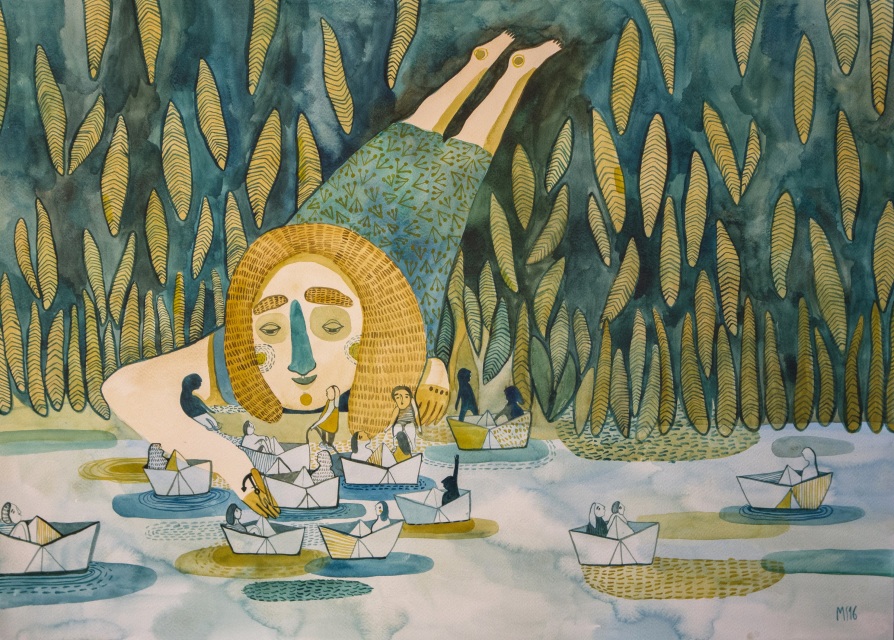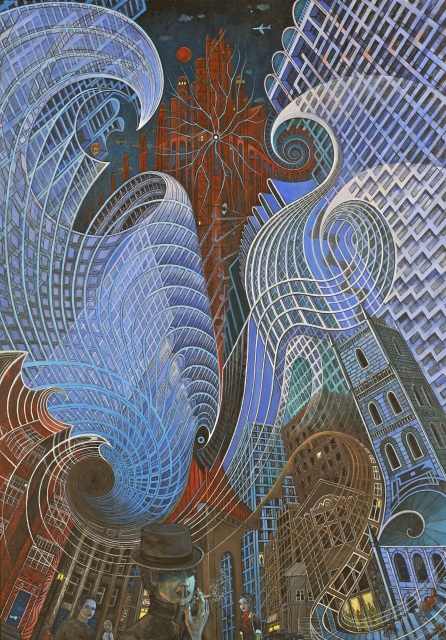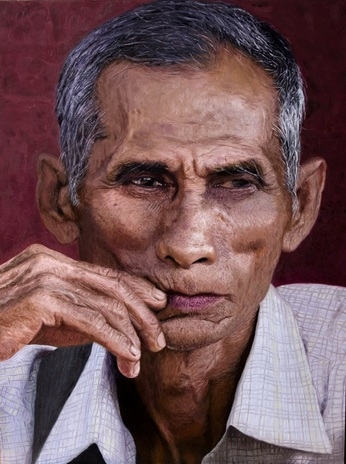Conrad Carvalho on Art competitions and Ashurst Emerging Artist Prize
Art competitions hold an important place in the ecosystem of the contemporary art world. They not only help to discover and showcase emerging artists to the art community, but they also provide great support and new opportunities for participants. In the first stages of an artist’s career, it is very important that they get their artwork seen, feedback from art professionals and advice about future steps.
Conrad Carvalho, Prize Director of the Ashurst Emerging Artist Prize and Gallery Director and Consultant for Oaktree & Tiger
Even though nowadays art prizes are very widespread and a lot of art organisations are launching their own art prizes, it is still a relatively new phenomenon. One of the earliest examples of historical art competition happened in the 17th century in France, when the Royal Academy of Painting and Sculpture initiated art competition Prix de Rome. However, art prizes didn’t gain bigger scope until the 20th century when they were a part of the Olympic Games. In 1912 Pierre de Coubertin founded Olympic art competition “Pentathlon of the Muses”, that for more than 30 years awarded artists in 5 categories: art, architecture, literature, music, and sculpture. At first, it didn’t get much attention, but already by 1932, the program’s exhibition at the L.A. Museum of History and Science drew a total of 384,000 visitors.
Existing art prizes are very diverse, being various sizes and having different criteria. They can be focused on a specific media, region or have a local or international scope. The awards are often financial prizes, exhibition opportunities, artistic residencies and specific commissions.
Some of the most widely known and preeminent art prizes today are: THE GOLDEN & SILVER LIONS during the Venice Biennial, THE TURNER PRIZE by Tate Britain, THE DUCHAMP PRIZE by ADIAF and Centre Pompidou, THE HUGO BOSS PRIZE by the Guggenheim Museum and THE BUCKSBAUM AWARD by The Whitney Museum amongst others.
The Art Partners met with Conrad Carvalho, Prize Director of the Ashurst Emerging Artist Prize and Gallery Director and Consultant for Oaktree & Tiger, and got insider information about art competitions and how they work.
TAP: What inspired the creation of Ashurst Emerging Artist Prize?
Conrad: I work with emerging artists because I specialise in ‘early’ collectors, art investment and corporate art. Ashurst is my client and they asked me for a way to help emerging artists that also could engage their employees and clients with them. They built a gallery space in their London offices, the Ashurst Emerging Artist Space. Hence I proposed the Emerging Artist Prize and constructed it to tick all the boxes of what they wanted to achieve. They enjoy being a part of the prize and it has very successfully brought attention to their exhibition space for artists and allows them to work directly with them without any middlemen.
The art prize has since become a very effective way to help as many emerging artists as possible, bring attention to the Ashurst Emerging Artist Space and involve employees and clients.
We hope we have helped thousands of artists worldwide with our art prize, blog with informative articles, social media campaigns promoting early emerging artists and our lecture/talk events for artists held throughout the year.
TAP: What differentiates The Ashurst Emerging Artist Prize from other art competitions?
C: I think we are unique. No other prize has as much engagement with the artist that we do. It is a lot of hard work but we love what we do and the artists we meet. It’s not just a black box art prize where you submit works online and wait to see if you're the winner, and complete silence until then. We host free, informative talks for artists and we get to introduce them to each other, to the sponsors and to art professionals to build a community. We meet them and discuss how they could develop their careers, improve their submissions to art prizes in general, how to be more successful and attract interest from galleries, art dealers and collectors.
While we do this we learn more about their art, they tell us what they do, their ideas; there is always some interesting story, idea or concept, even techniques that I haven't seen before. We get every type of artist from traditional still life painters to the super conceptual artists, from pencil drawings to sculptures as well. I learn a lot and that makes me want to spend more time doing this.
'No Way Out' by Matt Alexander Ray (Ashurst Prize 2015)
TAP: Could you describe the process of what happens next after you've selected all of the artists that applied?
C: The deadline is the 14th February 2016, once we get to that deadline I compile all of the entries and present them to each of the judges. We go through every single artwork and we all pick our favourites and I compile that into a bigger list. With that list, we then all sit around a table and discuss each and every one of them. Then we pick another short list out of that and we then delve deeper into the whole submission; so we look at the artist’s statements, the artwork commentaries, if they have a website, we try to do more research on the artist, we may even call them for a chat.
We’ve got a diverse judging panel so we don't have a particular genre or media that we focus on. We try to pick the ones we think will benefit the most from winning the prize because we think this prize will help launch these artists and get them a much bigger audience. We want to attract interest for them from galleries, we want them to have a really good exhibition and for me the key to an artist being noticed and picked up is them having a really good and interesting exhibition.
TAP: What is your favourite part of the whole process?
C: The initial stage is really interesting - it makes me wish I was an artist. This is when we’re going through and compiling of all the entries. Last year we had 600 artworks to go through. We start with digital submissions and go through those. There is always some breathtakingly fascinating work, and there are others that grow on us gradually as we read the whole submission. When we pick the 25 that are shortlisted we invite them to send the physical artworks to us. That stage is fun too because I’m always surprised when I see the artwork in real life. Yes, unfortunately, digital isn't the best way to do it but it’s the only way that we can give a large number of artists the opportunity to participate in the competition. When you pick the winners, the next interesting stage is where I help curate an exhibition with them. I will help them with a title, help them pick the artworks, maybe give them ideas of other artwork to create for the exhibition.
Conrad Carvalho with The Art Partners
TAP: How do you judge the selected/shortlisted works? What becomes a distinguish criteria?
C: We look through every single artwork photo and use the commentary to help us connect with the artwork. After shortlisting those, we look more into the individual artists and search for an interesting message/voice/idea as well as clues to future potential. We don’t mind if you haven’t got a long CV or done any exhibitions, nor how long your career has been so far. Age, country and education won’t hold you back in any way.
TAP: What are most important tips that you can give to emerging artists who want their art to be seen, and for entering the art competitions?
C: We have a detailed blog article giving advice on how to enter art prizes in general.
The best way to get nowadays seen is social media. Your audience will grow if you post the right things at the right times, and if you engage with people.
The biggest tip with interacting in person has a rehearsed and succinct pitch, something very quick, maybe just one- and three-sentence, encourage them to ask you to see the art, rather than you offering to show it.
The third tip is to have a tough skin because you’ll get rejected a lot. The number of people that are actually going to be interested in fine art in general, interested in your particular style and interested in buying something now is going to be quite small. You just have to play the numbers game and keep talking to people. Do your best to not be worried about getting rejected, it’s going to happen most times. You may only need one lucky break, one connection or one new collection and then it can be suddenly a lot of people will want to see your work.
TAP: Thank you.












